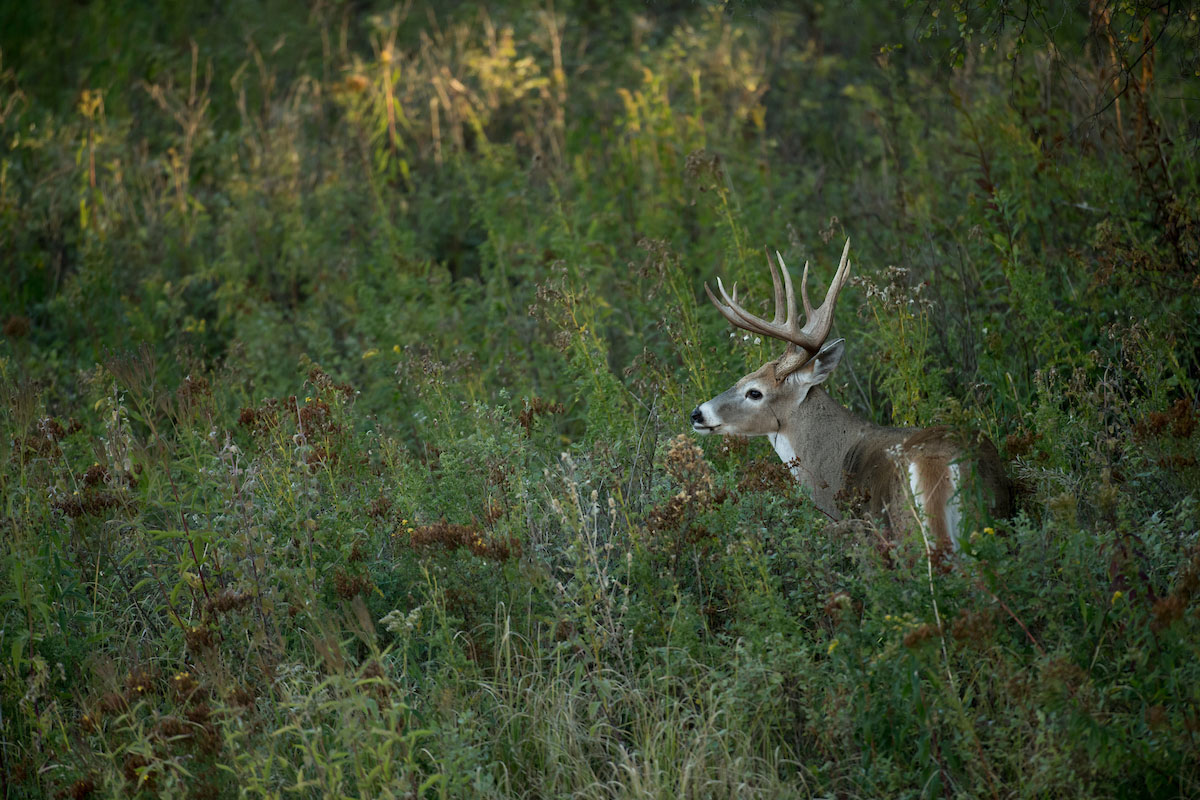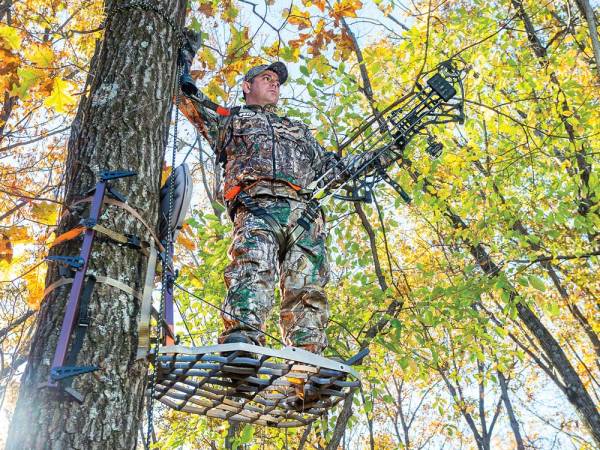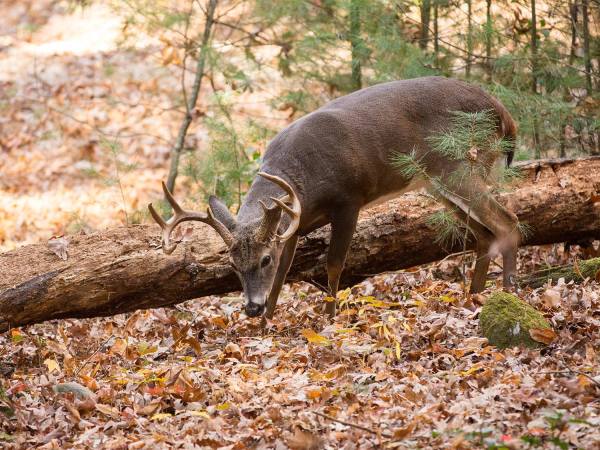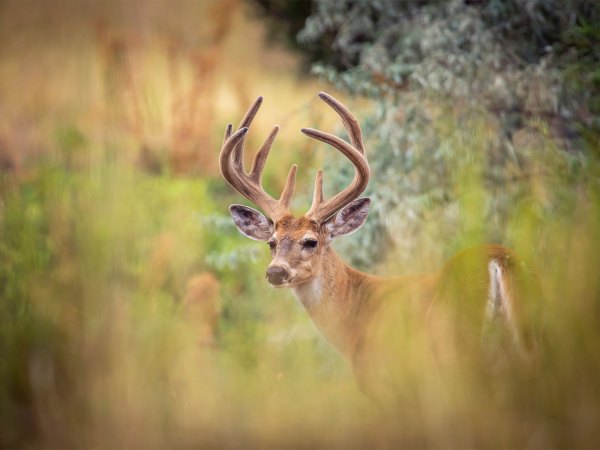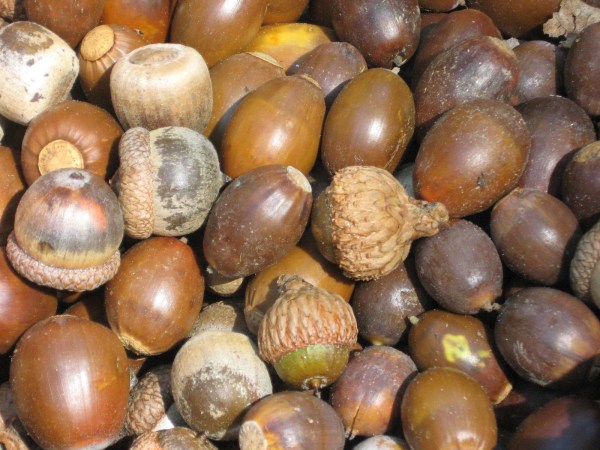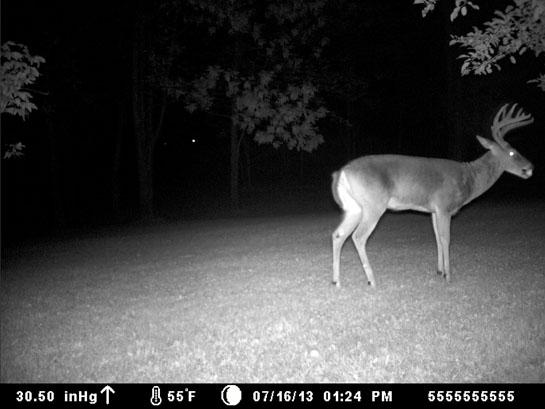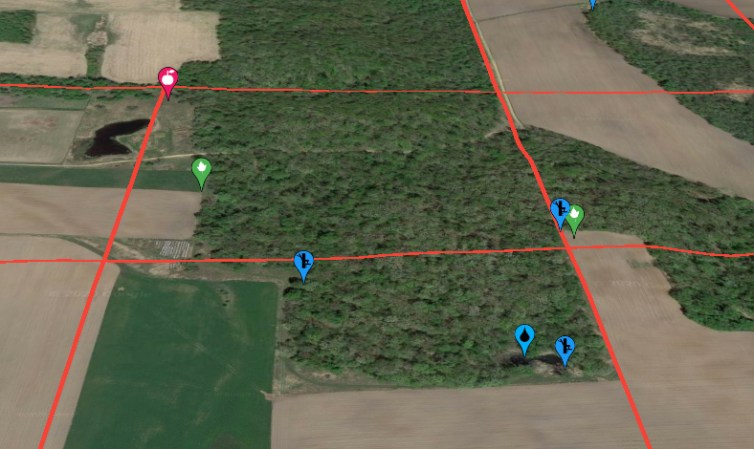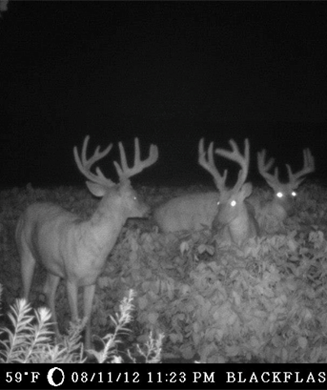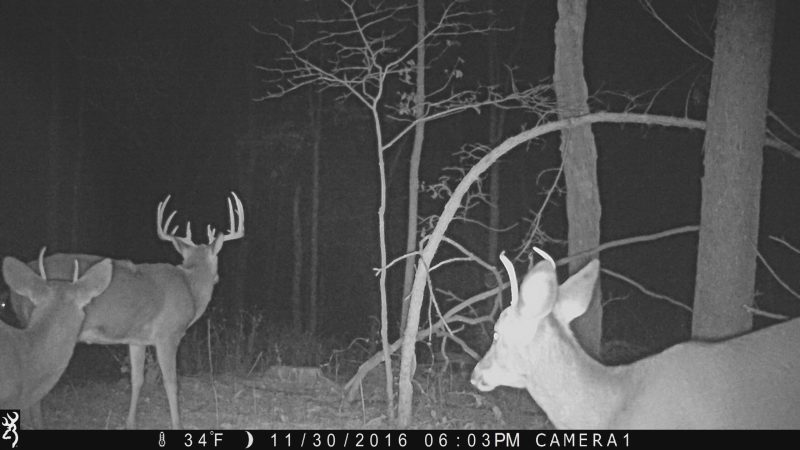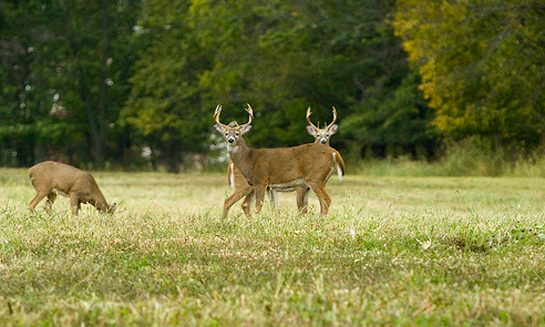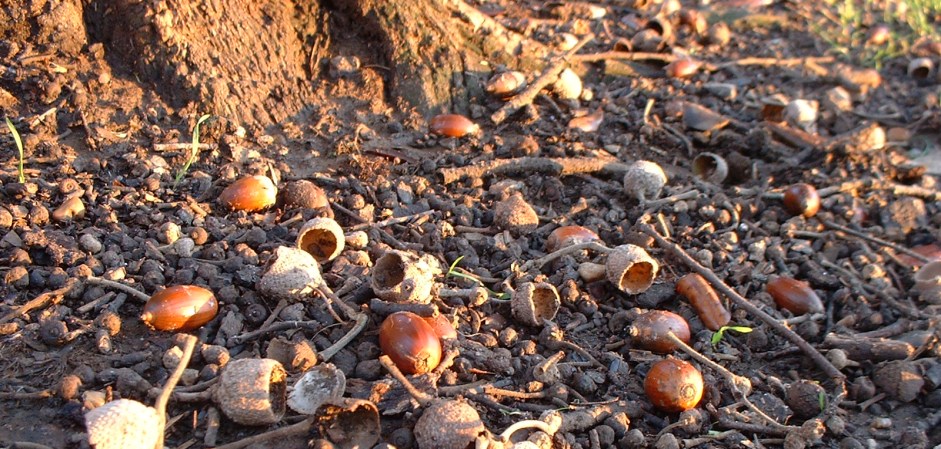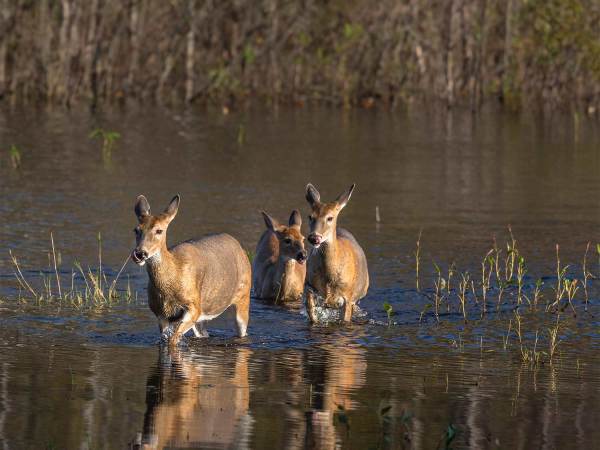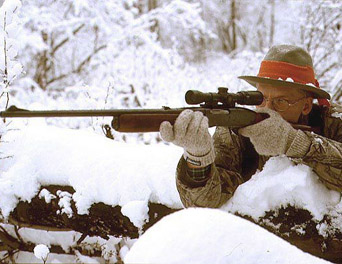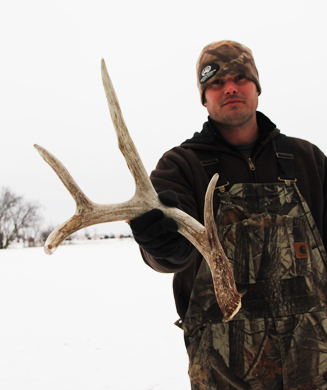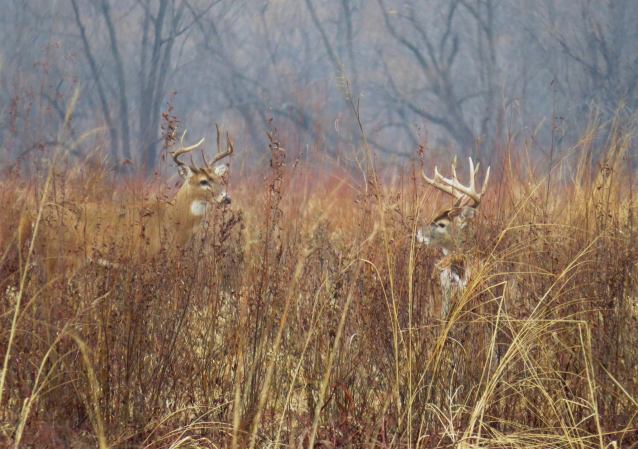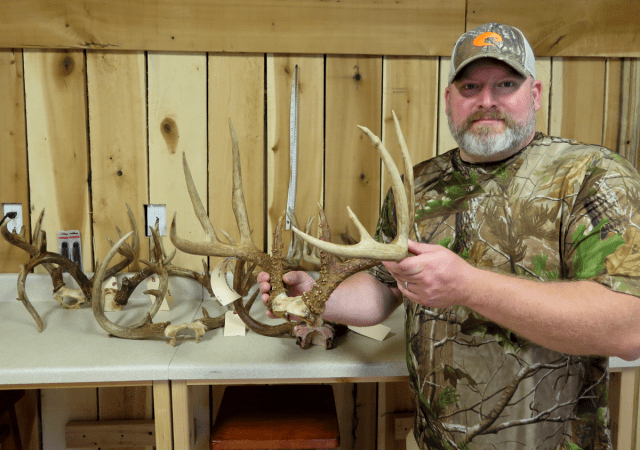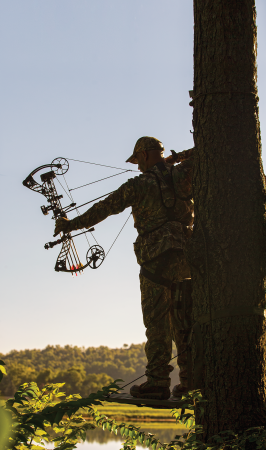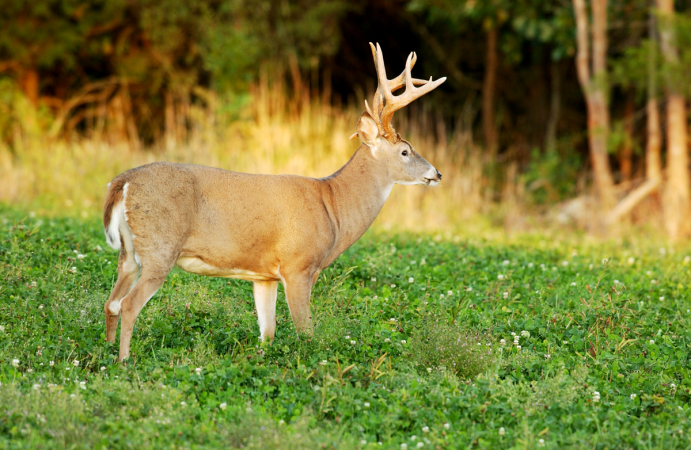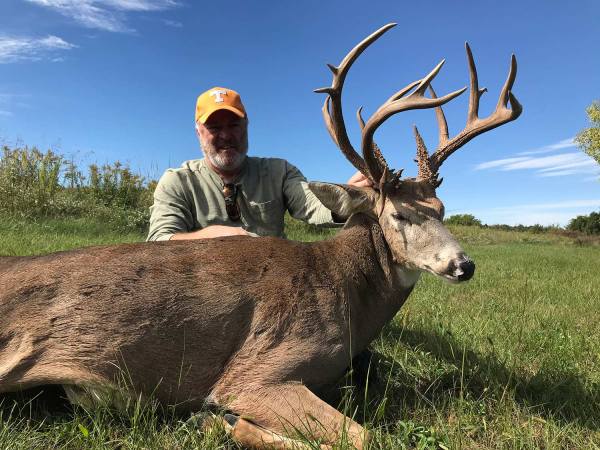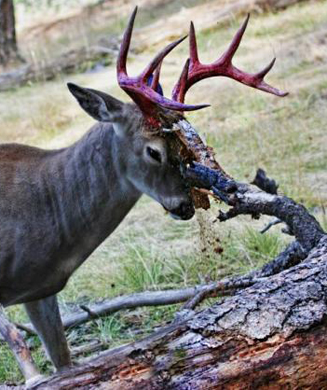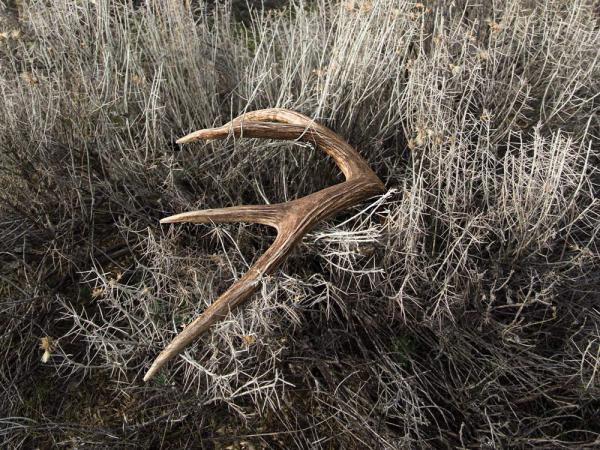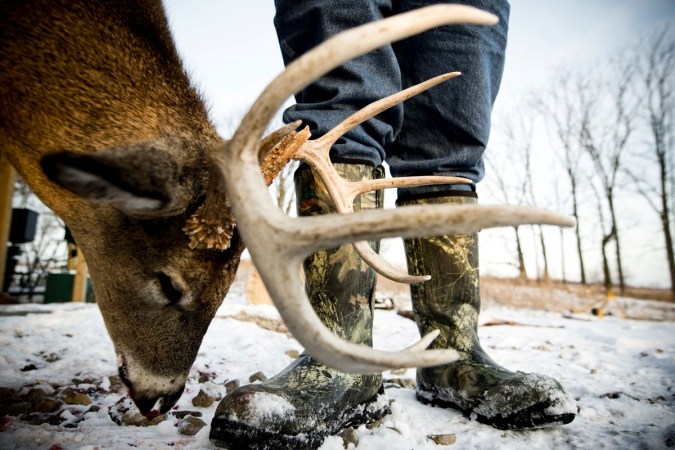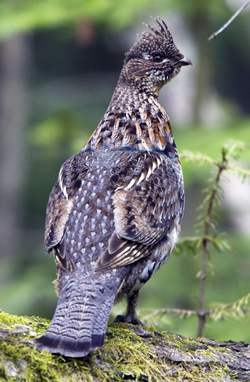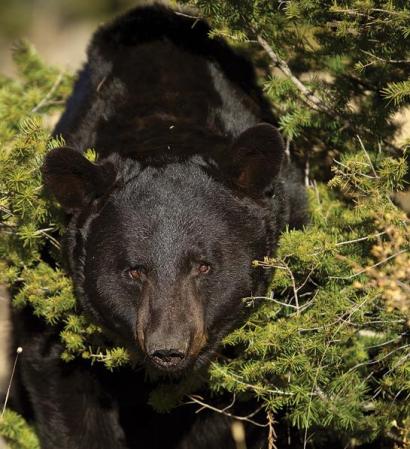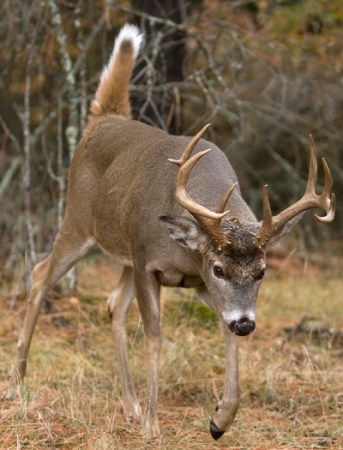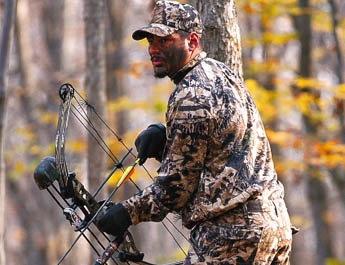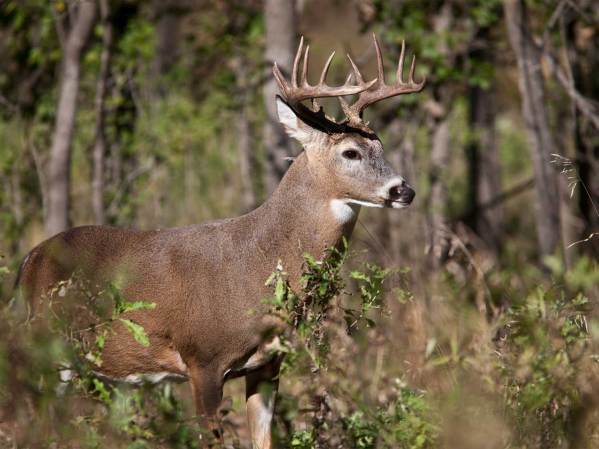Early season deer hunting can be tough. Mature whitetail bucks aren’t driven to breed (the way they are in the rut) and weather conditions aren’t forcing them to food (the way they are in the late season). Plus, conditions change rapidly in the early season. Bucks change their main food sources and sometimes even their core areas as summer turns to fall.
On the upside, early season whitetails haven’t been hit with hunting pressure yet. So dedicated whitetail hunters who scout carefully during the summer and early fall have a real chance at a mature buck before the intensity of the hunting season kicks in and turns him nocturnal. With that optimism in mind, here’s our ultimate guide on the best strategies, tactics, and tips for how to hunt early season deer.
Pattern Bucks Before the Season
Whether you hunt public land or private ground, mature bucks are good at avoiding hunters (that’s how they’ve grown old, after all). That means you’ve got to put in plenty of work before the season starts if you want to tag an early-season buck. Your goal here is to pattern a good buck before the season starts and have a hunting strategy in place for opening day. Here’s how to do it.

Use Trail Cameras to Pattern Bucks
Setup trail cameras around major summer food sources (more on this below) and on trails to those food sources. Find tips on how to hang trail cameras properly, here.
Trail camera pictures are only as useful as you make them. At the most basic level, they tell you if nice bucks are around. But what you’re really trying to figure out is where those nice bucks are heading, where they’re coming from, and where they might be vulnerable. To do that, you’ve got to really read the pictures, not just flip through them. For example, look to see if one of your target bucks is hanging out with a bachelor group of smaller bucks. That way, even if you don’t keep getting photos of the big buck, but capture shots of the smaller bucks, you can still gamble on the big buck’s general whereabouts (some of the wariest bucks are good at avoiding cameras). Years ago I got a trail camera shot of a buck with muddy legs. That told me he probably crossed a nearby swamp before coming out to feed.
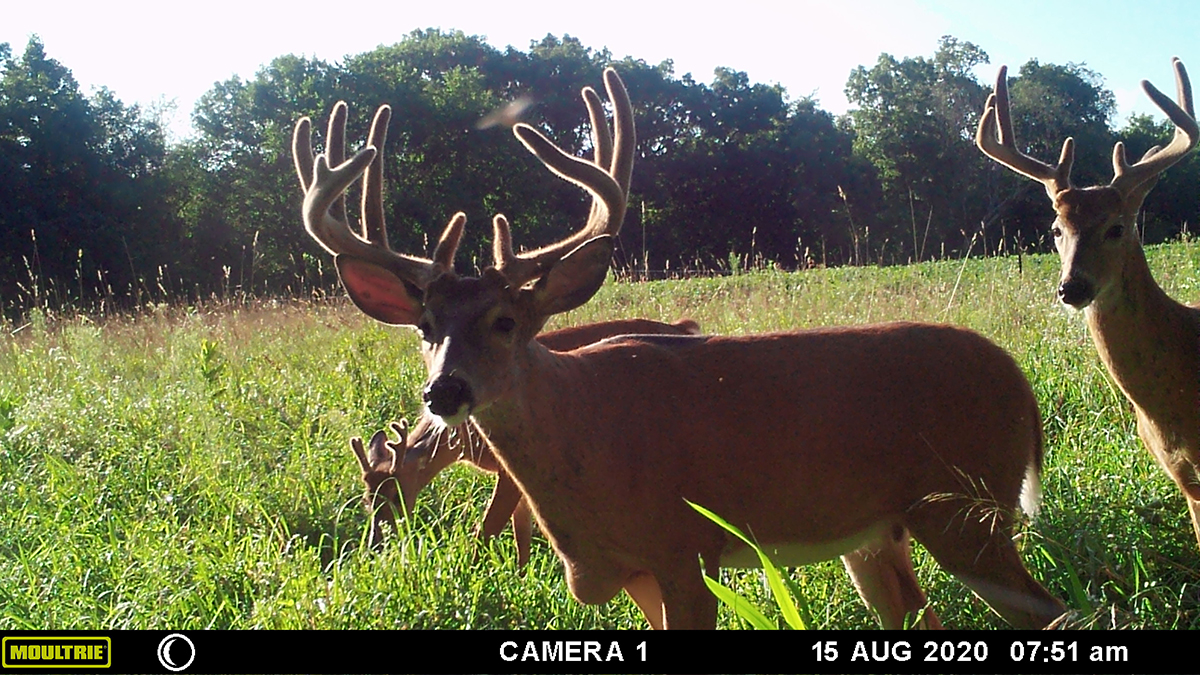
You can look for more general hints too. For example, are deer hitting certain food sources more often than others? Are certain fields more active at night versus in the morning? Log all of the early season hunting data you’re collecting in an app like HuntStand so you can develop a hunting strategy.
Glass Summer Bean Fields
Whitetails love to feed in soybean fields during summer evenings. A classic strategy is to park along dirt roads and glass fields while deer come out to feed. This is a fun way to take inventory of the bucks in your area, but depending on when your season starts, it’s not the most effective way to pattern a buck for hunting season. Bucks typically shift their summer feeding patterns right around the time early archery seasons start. So just because you see a nice buck feeding in a beanfield during the summer, doesn’t mean he’ll be out there on opening day.
But still getting glass on mature deer before the season starts is always useful, and it’s fun. Once you spot a mature buck, use trail cameras and mapping apps to try to identify where that buck might be bedding (it will likely be in nearby heavier cover). —Alex Robinson
What Deer Eat in the Early Season
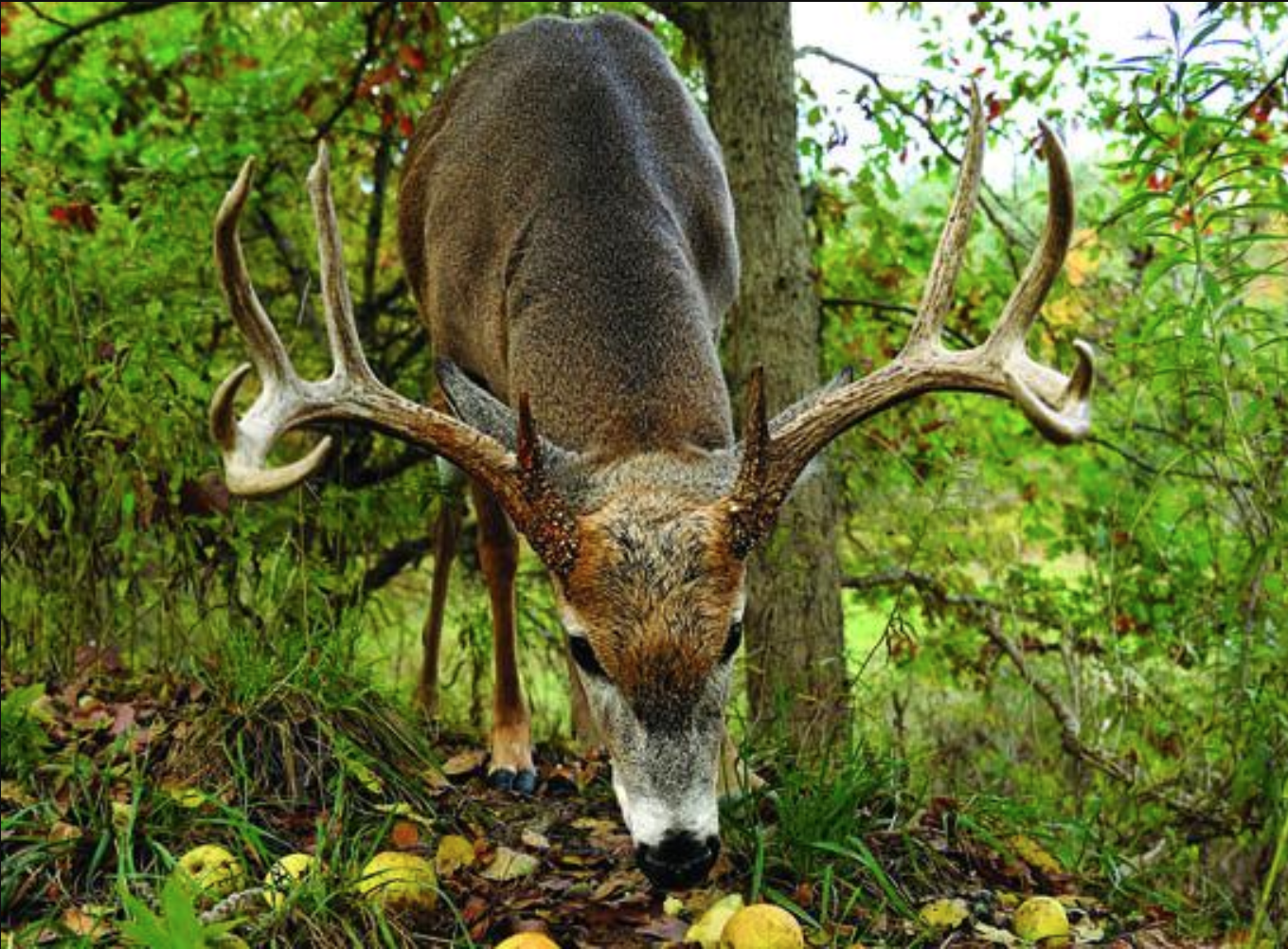
In the early season, whitetails spend only a few hours of every day on their feet, mostly feeding. Find the food and you’ll find the deer. Find their favorite food and that job becomes even easier.
About the time most hunting seasons begin whitetails are going through a dietary transition, switching from high-protein plants to high-calorie carbohydrates to fatten up for winter. Where available, that means hard and soft mast (nuts and fruits) and grains.
According to research, where they occur acorns are the most preferred natural food of whitetail deer. Botanists lump all oak species into two general groups, white and red. White oak acorns tend to contain fewer tannins, making them sweeter. They also tend to drop earlier. Where both types occur, deer generally key in on white oak acorns first, then switch to reds later. In general, red oak leaf lobes are pointed and tipped with a hair-like bristle. Those of the white oak have rounded lobes and no bristle. There are exceptions.
Early bow season is also hurricane season if you live near a coastal area. Even a glancing blow from a tropical storm will send a bumper crop of acorns to the ground. Deer won’t be long to take advantage of it, and neither should you.
Hunting around crops can be tough in the early season. Try to locate major travel routes to and from food sources like standing corn, soybeans and milo, which represent an almost limitless source of carbohydrates. Deer may overlook hard, dry soybeans in the early season, until a prolonged rain softens them up. Where trees are scarce, you may have to improvise and set up a ground blind along a hedgerow.
Recent research suggests that soft mast, like apples, persimmons and berries, may be far more important as an early-season food source than anyone ever imagined. They might be underutilized by hunters, but certainly not by deer. Like acorns, wind-thrown apples can provide a short-term bonanza after a blustery day. And when persimmons ripen and fall to the ground, deer will walk through 100 acres of corn or soybeans to get them. If your land has fruit trees, hunt them. If not, plant them. Wildlife nurseries have developed several varieties of apples, persimmons and other soft mast trees that bear fruit at very young ages. —Bob Humphrey
Focus on Water Sources
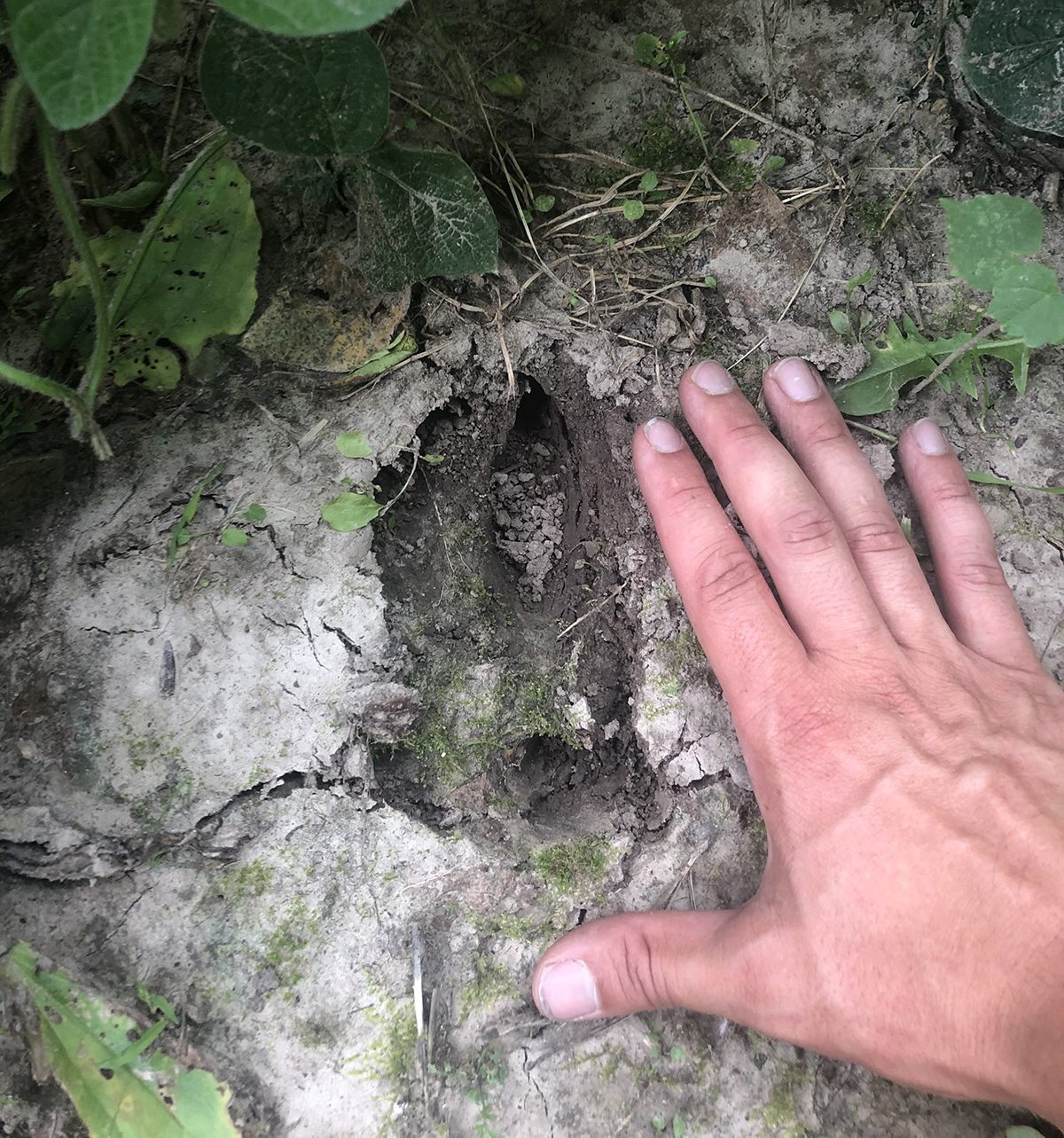
On warm early-fall afternoons, bucks will often hit some water before they go out to feed. Little backwaters like ponds, creeks, and even big puddles make for classic setups on early-season bucks (bucks seem to prefer smaller, muddier puddles than crystal clear rivers, for some reason). Focusing your scouting on water can be especially effective during drought years. If you see a big old buck track in the mud around a water source, it’s probably worth hanging a treestand or at least a trail camera in the area. If you see only little tracks (or no deer tracks at all) just move on to the next area.
Best Stand Setups for Early Season Deer
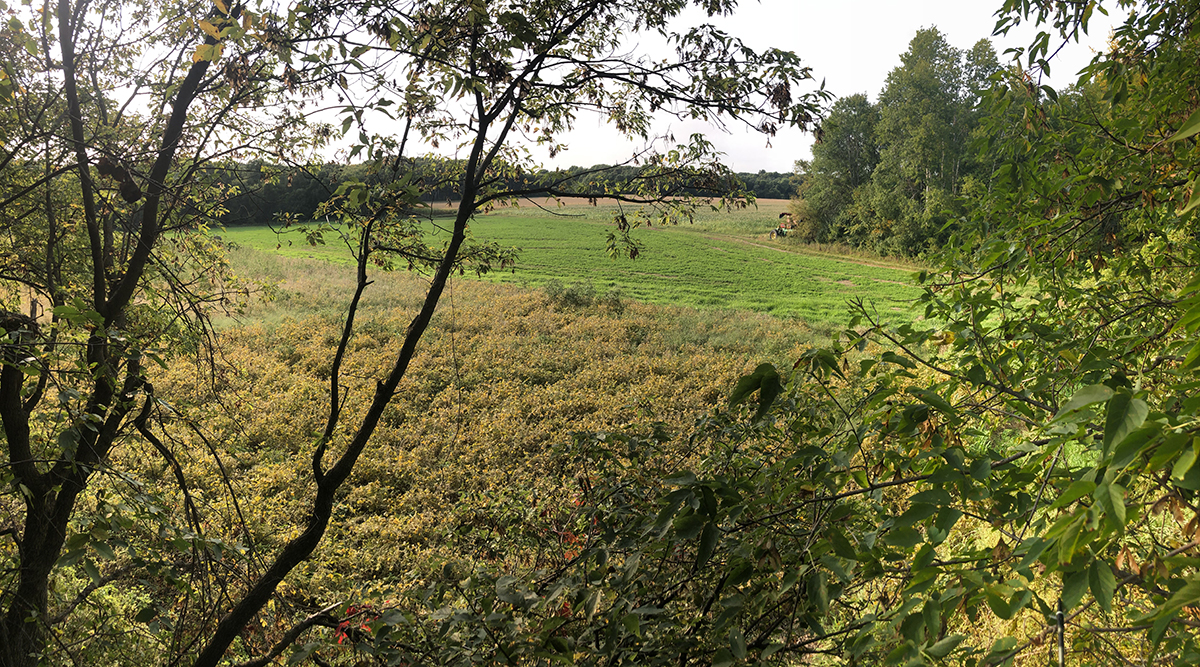
In the early season, a reluctance to change locations is a fast road to tag soup. Conditions change quickly—often overnight. Whether your season opens in September or October, whether you’re bowhunting or taking advantage of an early firearms season, flux is the norm. Food sources are shifting. Crops are maturing and being harvested. Acorns are dropping and being depleted. Rub lines pop up. Scrapes appear. The key to shooting a whitetail now is to observe and react. Here are the six best stand sites for early season deer hunting. —Tony Hansen
1) Agricultural Fields
Bumping deer in ag fields at first light primes a spot for failure. Avoid morning sits until the rut draws near, and plan for a spook-free exit in the evening. Sloppy entries and exits educate a lot of deer in a hurry. Harvest timing and crop maturity can change patterns overnight. Keep an eye on the beans. When they start to yellow, deer will move to fields that are still green or they’ll change food sources entirely. When the fields dry up, head for the oaks that are likely dropping acorns and sucking deer into cover.
2) Food Plots
If you’ve positioned yourself near cover, this is one of those rare instances where a morning hunt is possible early in the season. You can catch bucks stopping for a bite at your food plot as they head from primary ag food sources back to bed. In the afternoon, bucks will often stage on secluded food sources in daylight before heading to primary sources after dark.
If your plot is planted with brassicas but you haven’t had a hard frost, switch to hunt a more palatable food source. Brassica plots don’t see much traffic until after a hard frost. If you’re hunting clover or oats—prime early-season options—and sightings dwindle, don’t overpressure the spot. Head for the acorns or a bedding-area funnel if you know you’re on a good buck.
3) Bedding-Area Funnel
This is a high-risk, high-reward strategy. If you have trail camera images (or sightings) of a stomper buck and know where he’s bedding, slipping in well before daylight in an attempt to catch the buck as it returns to bed can pay off big. Use this strategy only after hunting the food source you expect the buck to be using in the evenings. Trail camera images can prove vital here.
If you don’t see or kill the buck during your first or second attempt, it’s time to get out. Pressuring a mature buck near its bedding area this early in the season can move that deer in a hurry—and permanently. Try to locate a fresh rub line near a food source now. Set up near its core.
4) Stands of Oaks
When acorns start to drop, all other food sources will go cold. The goal is to hunt those oaks the deer are visiting and that allow you to enter and exit your stand without detection. When the stand you’re hunting dries up, head for another oak flat that’s still producing.
5) Soft mast
Hunting soft mast (apples, pears, persimmons) is very similar to hunting hard mast—locate trees that are producing and dropping. Evaluate the ease of entry and egress. If you can access a stand site undetected before dawn, morning sits can produce. Otherwise, stay out. Soft mast generally doesn’t last long once it hits the forest floor. When the fruit is gone, you should follow suit. Stick to food sources—acorns first if they’re falling, followed by ag crops and food plots.
6) Scrape lines
Deer generally visit early-season scrapes after dark, and there’s plenty of science-based data to prove it. But scrapes positioned in cover near bedding areas are visited on the fringes of daylight. Trail cameras will tell you if the scrape is active enough to warrant an early-season sit. —Tony Hansen
Hunting Early Season Whitetails on Private Land
Savvy private-land hunters are all about keeping their targeted bucks calm and relaxed. They do not intrude, but rather nibble away at theedges of a buck’s territory in hopes of catching him with his guard down. They make their move when the time is right but avoid unnecessary pressure at all costs.
“During the early season, big bucks are still using open fields and can be easy to pattern, but that doesn’t mean they are easy to hunt,” says Bass Pro Shops’ Jerry Martin, who is a big fan of the pre-rut. “You can hunt a mature buck from the same stand for maybe one or two days, but then he’ll be onto you. You can’t be traipsing all over the woods and expect to kill him. I’m real careful to play the wind right and keep noise to a minimum–it’s critically important. Anything new or strange will alert a big buck in a hurry. Clinks and clanks are a dead giveaway. A buck that has been around for a while knows all about strange noises and smells. He may start the season relaxed, but it doesn’t take much to put him on alert.”
“We are super cautious to not pressure them,” says Konrade. “A big old buck won’t put up with it for long. We set and check cameras only when the deer are bedded.”
READ NEXT: How to Find and Affordable Deer Lease
On my 500-acre property in Upstate New York, my son Neil (pictured above) and I also go to great lengths to avoid polluting the woods with human scent. We try to provide the deer with all the comforts of home—and surprising them in their bedrooms is not one of them. Our neighbors hunt hard and lay down plenty of tracks and scent cones that alert the nearby deer to their presence, and we try to use that to our advantage. We give the deer plenty of room and try to provide them with sanctuary areas where they can bed and feed without harassment. They pile into our safe haven as the surrounding pressure builds. We may move in on them during the rut, but we try to avoid too much pressure during the early season. —Craig Dougherty
Hunting Early Season Whitetails on Public Land
Many public-land hunters, like Jason Ashe an experienced bowhunter from upstate New York, prefer to hunt early season deer aggressively.
“I look for early-season food on public land just like I do on private property,” says Ashe. “The only difference is, I didn’t plant it. The state forests I hunt have been logged over the years, and these areas are covered with the berry bushes and young growth that deer love. I’ve found old farm sites with honeysuckle vines and all kinds of grown-up stuff that deer love to feed on.
“Another thing to keep in mind is that public-land deer definitely use private croplands. A deer will travel a mile or more to get to a field of beans or a patch of alfalfa. They may feed all night out in the open, but by daybreak they will be well back in the woods, where no one can reach them. Most guys hunt too close to the road. That’s why I study aerial photos to find human travel routes, then map them. This tells me where I don’t want to be. I like to set up on natural terrain funnels and crossings, and catch deer when they are coming back to their bedding sites.”
“I hunt deep and I hunt tight,” says Ashe. “I can’t and don’t worry about pressuring them by hunting bedding areas—they are already buggered up. I try to catch them heading back to their bedding areas or leaving just before dark. You have to get way in early and stay late.”
Chris Eberhart, a veteran bowhunter from Michigan hunts aggressively as well. He wants to be set up long before shooting light and will stay as late as legal light allows to arrow a late mover.
READ NEXT: How to Beat the Crowds in Public-Land Whitetail Woods
“You have to find these areas, set up on them, and put in your time if you want to kill a mature deer on public land,” says Eberhart. “I hunt a cattail swamp on opening day. Bucks love the place. I carry in my waders and make my way onto a small, dry spot a couple of hours before daylight. It’s a great -early-morning spot to catch a buck heading back to safety in the gray light of dawn.
“I also keep a book full of remote places like this to set up in. They all have one thing in common–and that is no hunting pressure. Big bucks know these places and are using them well before the season opens. I move right in on them, give ’em my best shot, and head out to another setup.” —Craig Dougherty
Early Season Deer Hunting Tips

- Don’t get busted. The last hour of daylight can be a magical time, so hanging in there until last legal shooting light is critical. A tougher chore is getting out of your stand without spooking deer. If you’re on a crop field, consider having a buddy pick you up in a vehicle or tractor. Deer are probably familiar with farm equipment and are less likely to run off to parts unknown when they hear it.
- Wait for the right buck. Looking to tag a big buck? Then don’t shoot at the small ones first. In the early season, older deer tend to hit food sources later than younger deer. Hold your fire.
- Stalk the corn. It’s common for deer to bed in standing corn and feed in a neighboring field of beans or alfalfa. This makes for an ideal stalking situation. Take a stand a few rows into the cornfield. When deer emerge, use the thick corn cover to maneuver into shooting range.
- Wait for daylight pictures. It’s cool seeing nighttime photos of the giant buck your targeting, but daytime photos are what you’re really after. Don’t get too aggressive until you’ve got photos of your target buck on his feet in the daylight.
- Get in the woods. Deer in heavily pressured areas likely won’t hit agricultural fields until last light. Dupe them by locating your stand 50 to 75 yards off the field edge and catch them on the way to feed. —Tony Hansen

